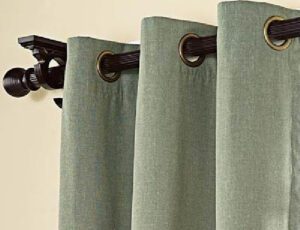January and February are most likely to bring us some very cold nights, and some cold days. Whether you are a renter or a homeowner, there are things you can do to make yourselves more comfortable as the temperature drops for the season.
Four things to do to make sure you and your house survive a frigid winter night
-
Prevent drafts from windows.
- Close and lock all your windows. They seal better that way.
- Close draperies on cold and windy nights to reduce the feel of drafts that invite you to raise your thermostat temperature. If you have insulated drapes or shades, all the better! If you don’t get some next time you upgrade your curtains or drapes.
- Adding a layer of plastic over your windows is a popular thing to do to prevent drafts. Some people say it helps, and some don’t. The way to figure out whether it is likely to help is to feel the window on a cool day. If the cold is behind the area you are covering, the plastic will hold some of the draft. However, you may find that the cold is on the window frame. In that case, those insulated curtains will help more.
Old windows and their replacements
Empty space in the window frames: Many old houses used to have windows which opened and closed using pulleys that were in the window frame. If the new windows were installed without filling the empty spaces in the window frame, cold air works its way through the uninsulated wood into your house.
Foggy replacement windows do not insulate as well: Double pane glass windows have a gas between the layers which acts as a transparent insulation. If the seals on the windows dry out, that gas escapes. Eventually, you will see water vapor form, which fogs the windows. Those foggy windows are not only ugly; they are poorly insulated.
2. Prevent broken pipes. Job one:
Turn off your outdoor spigot. If you don’t it might freeze and break. It’s easy.
- Find the shut off in your basement. Turn it all the way to the right (if it’s a knob); turn it perpendicular to the pipe (if it is a handle).
- Then go outside and turn the outside faucet/spigot/hose bib all the way to the left, which is open. (If you turned it off inside, there will be little or no water coming out.)
- Now, go inside and hang a tag or ribbon on the valve where you turned it off. That saves you a search in the spring!
3. Prevent broken pipes. Job two:
Keep an eye on any pipes that run on outside walls of your house on very cold nights.
- Leave them dripping when temperatures are below 15 or so for more than a few hours.
- If you have a sink with a cabinet under it, and that cabinet is very cold, leave the door open overnight, so the house heat can help prevent freezing pipes.
4. Allow the warm air in.
Move furniture, rugs, and mats away from hot air heating and intake ducts. (This is something most people don’t know about, until it happens to them.) But you need to keep the air ducts clear if you want your furnace to operate efficiently.
Since the grates are sometimes in the floor, they can be overlooked. Both the intake (where air returns to the furnace) and the heating ducts need to be clear of mats, rugs, and furniture.
If the furnace is blowing in some grates, it should be blowing in all of them, except the intakes. (In some old houses, the systems get reconfigured so there are some grates that are no longer doing anything. Treat them like intakes, just in case.)
Don’t cover the intake grates. The intake grate is usually bigger than the grates that the heat comes out of. They are often in a hallway (which make them tempting for places to put boots). Blocking the intake grates decreases the efficiency, at least, and can cause even worse problems if the air is cut off too much for too long. The furnace can stop working entirely if you suffocate it enough.
I found out about intake grates the hard way, as a landlord.
Once upon a time, my tenants put a rubberized mat over the whole intake grate. That caused their furnace to stop working. The HVAC guy showed me what they were doing and tuned up the furnace while he was here. Problem solved. He told me of other people with this problem. It’s common.




Leave A Comment